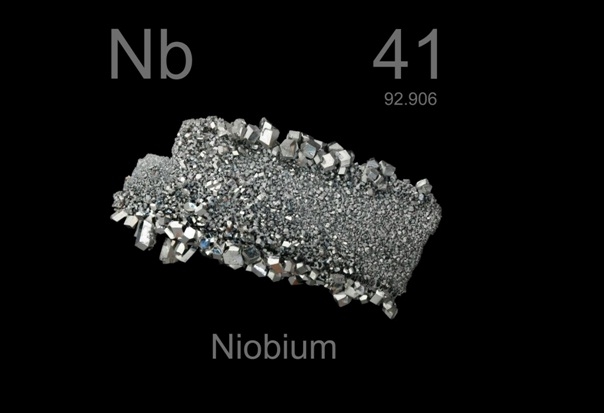Niobium: Unveiling Its Origins And Refinement
Introduction
Niobium, a metal with multiple functional applications undergoes several processing methods to change its raw state into a material utilised in various sectors. This article examines the processing and refining methods and details the production steps and importance of refining for optimum performance.

Methods for Niobium Processing
The extraction of niobium involves several key processes. Each process is designed to satisfy specific industrial requirements.
- Carbothermic Reduction Process: In this method carbon is used as the reducing agent to convert Nb2O5 into niobium ingots through electrolysis and reduction in molten salt.
- Niobium and Aluminium Reduction Process: This process utilises aluminium as the reducing agent and contributes to niobium production through reduction reactions.
- Sodium Reduction Process: Although used less frequently, this method employs sodium reduction for niobium production.
- Molten Salt Electrolysis Process: This process involves the electrolysis of molten salt. It is known for its operational simplicity and lower production costs.
- Niobium Reduction Process: This method also contributes to the production of pure niobium.
Vacuum Carbon Reduction Process
The vacuum carbon reduction process is one of the principal methods for niobium production. It is carried out in a vacuum furnace. Carbon’s affinity for oxygen in comparison with niobium is exploited whereby it reduces Nb2O5 into niobium ingots. The process is noted for high product yield, cost efficiency and minimal by-products. Consequently, high-purity niobium ingots and metal powder are produced through a wet processing technique.
- Direct Carbon Reduction: This method produces a sponge-like form of niobium with a high surface area and low levels of metallic impurities and nitrogen. It is suitable for niobium powder used in capacitors.
- Indirect Carbon Reduction: This method is characterised by high production capacity. It yields relatively compact niobium strips that are used for rods, ingots and processing materials.

Thermal Sodium Reduction Method
Although less commonly employed in capacitor production, this method utilises sodium reduction to produce niobium.
Electrolysis Process
Niobium production by electrolysis includes molten salt electrolysis. This process is known for its operational simplicity and low production costs.
Nitriding Process
A nitriding process has been developed in recent years. In this process, niobium oxide or niobium-iron is used as the raw material. The materials react with ammonia or nitrogen and carbon to produce niobium nitride.
Niobium Refining
Refining niobium is critical for removing impurities and improving the metal’s properties.
- Purification: The removal of impurities, including hydrogen, oxygen and nitrogen, is essential to prevent niobium embrittlement.
- Compaction: This step is conducted concurrently with purification and ensures the optimal density of the refined niobium.
Conclusion
In conclusion, converting niobium from its raw state into a functional material requires precise processing methods and refining procedures. The vacuum carbon reduction process, electrolysis and nitriding methods each contribute to the utilisation of niobium in several industries. The refining process is crucial to enhance the material’s characteristics and to assure its performance in industrial applications. Stanford Advanced Materials remains actively involved in this research and supports the further development of niobium technology.

 Bars
Bars
 Beads & Spheres
Beads & Spheres
 Bolts & Nuts
Bolts & Nuts
 Crucibles
Crucibles
 Discs
Discs
 Fibers & Fabrics
Fibers & Fabrics
 Films
Films
 Flake
Flake
 Foams
Foams
 Foil
Foil
 Granules
Granules
 Honeycombs
Honeycombs
 Ink
Ink
 Laminate
Laminate
 Lumps
Lumps
 Meshes
Meshes
 Metallised Film
Metallised Film
 Plate
Plate
 Powders
Powders
 Rod
Rod
 Sheets
Sheets
 Single Crystals
Single Crystals
 Sputtering Target
Sputtering Target
 Tubes
Tubes
 Washer
Washer
 Wires
Wires
 Converters & Calculators
Converters & Calculators
 Write for Us
Write for Us
 Chin Trento
Chin Trento



